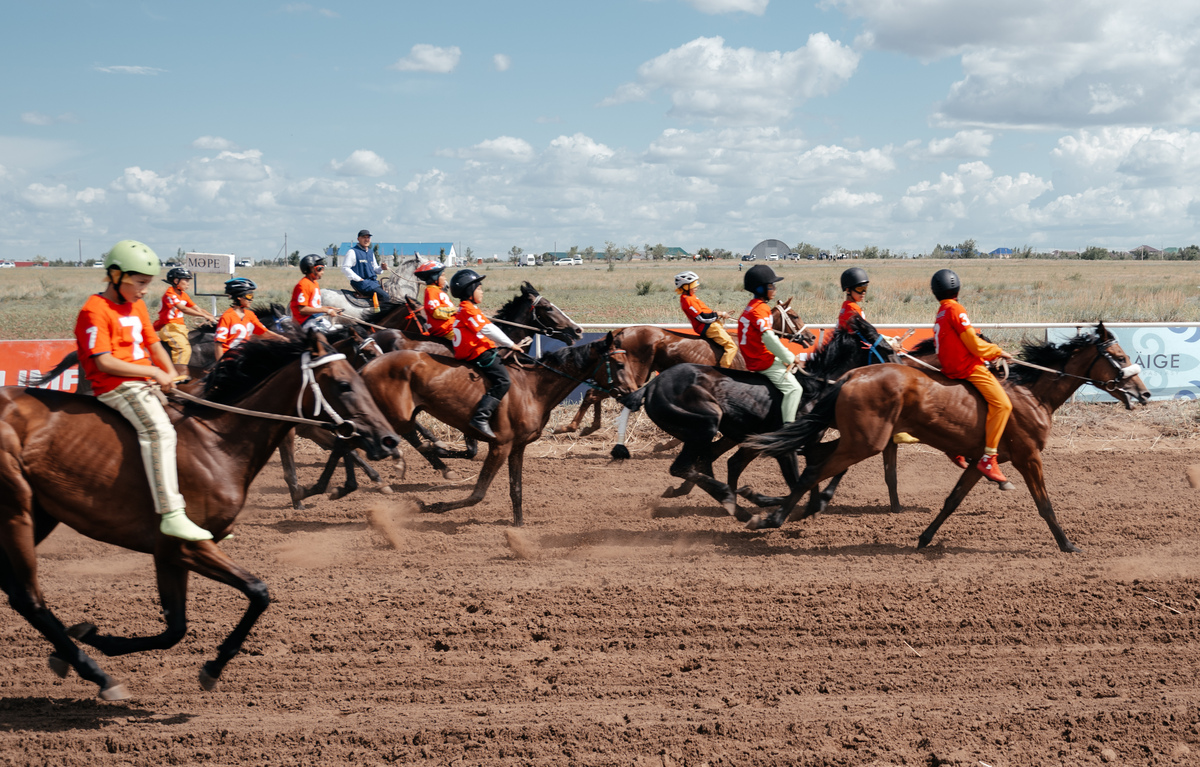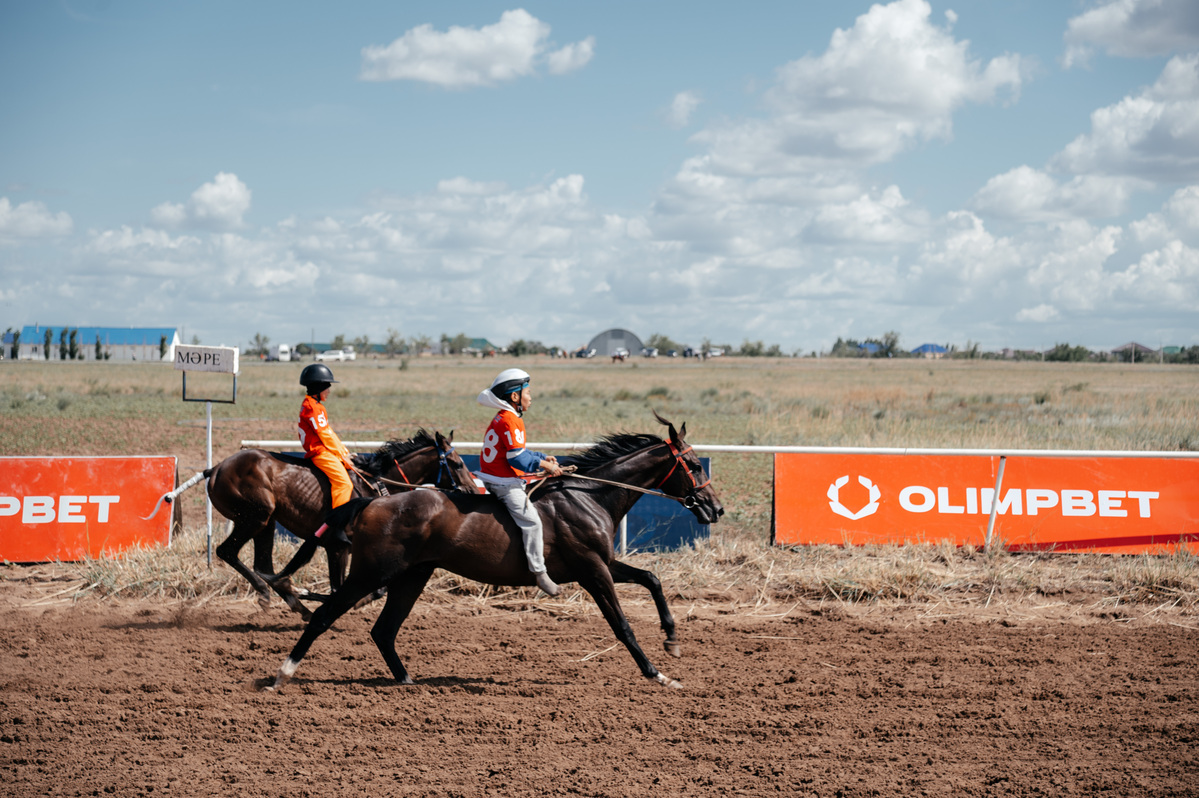ASTANA—Traditional horse racing, which unites the history of the Turkic world, Baige is both a sports competition and a unique cultural spectacle that requires exceptional tactical skills from the rider. With less than 50 days remaining until the grand start of the Fifth World Nomad Games (WNG) in Astana from Sept. 8-13, The Astana Times presents the background and types of WNG horse racing sports.

Photo credit: Kazakhstan’s Baige Federation
Baige originates from the nomadic lifestyle, where nomads needed to prepare horses for long journeys. Kazakhs often organized horse races to mark significant occasions, such as weddings, childbirth and other celebrations.
Traditionally, Baige is a horse race on rugged terrain. Nowadays, it is held at racetracks. The distances for equestrian competitions vary from short sprints of two kilometers to endurance races of 50 kilometers or more. Sometimes, Baige takes the form of a chase after a rider who initially breaks away from the group.
Horse endurance and strength are paramount in these competitions. Not every breed can withstand a long-distance gallop. Kazakhs and other Turkic peoples, engaged in animal breeding for centuries, have bred hardy horses that still participate in traditional horse racing.
There are various races, each with specific rules. At the WNG, races, including Kunan Baige, Alaman Baige, Top Baige and Zhorga Zharys will follow Kazakhstan’s Baige Federation rules. The foreign team lineup can have three horses, three jockeys, three coaches, one representative, and one groom. The Kazakh national team includes six horses, six jockeys, six coaches, and six grooms.
Kunan Baige
Kunan in Kazakh means a two-year-old foal. Hence, horse racing is for horses over two years old, with riders aged eight or older. Traditionally, a horse that participates in minor races from its Tai (one-year-old foal in Kazakh) period is prepared for Kunan Baige. This race serves as preparation for the more demanding Alaman Baige, which requires strength, agility and endurance.

Photo credit: Kazakhstan’s Baige Federation
Kunan Baige was often held at small weddings over a distance of up to 15 kilometers. At larger gatherings, it was a warm-up event for the crowd until Alaman Baige horses arrived. At the WNG, Kunan Baige will be held over 11 kilometers, and horses of all breeds over two years old can participate.
In the past, children learned the entire cycle of preparing their horses, from care and training to grooming. This experience incorporates a desire for hard work and success, with children becoming knowledgeable about their horse’s character, needs, strongest side, abilities and how to use them in a race.
After Kunan Baige, it was possible to determine if the horse could participate in longer distance races.
Alaman Baige
Alaman Baige is a cross-country horse racing over long distances for adult horses over three years old.
This type of racing tests the horse’s endurance. Based on practical experience of the Alaman Baige, thoroughbred horses of valuable breeds, such as English, Arabian, Akhal-Teke and others, are not allowed to race.
Unlike other races, there is no standard for the length or type of the race distance, which can include rough, mountainous and rocky areas and extend up to 35 kilometers, and rarely over 50 kilometers. However, at the WNG, Alaman Baige will cover 25 kilometers, and horses of all breeds over three years old can participate.

Photo credit: gov.kz
In the past, Alaman Baige was used to select and appoint the strongest horses for long campaigns. The race also highlighted the persistence of child riders and the strength of their harnesses.
In old Kazakh, Alaman means the masses and community, as well as an armed group or military action. In Kazakh folk songs about Batyrs, Alaman sometimes refers to a military group that did not have specialized training but went to war out of necessity.
Top Baige
Top Baige (group race) is a type of horse race typically spanning between 10 to 15 kilometers. Both children and adult riders participate in the group race. When Sultans Kerey and Zhanibek founded the Kazakh Khanate in the 1470s, a group race was organized on the banks of the Shu River. Since then, Top Baige has become an integral part of the Kazakh collegial assemblies.
In the past, when horses approached the finish line, others were allowed to assist their speed by striking them on the side and pulling them out of the saddle. This practice is now prohibited.
At the WNG, Top Baige will be held at an 18-kilometer distance. Horses of all breeds over the age of three are allowed to participate.
Flat Racing
Flat racing is an elite sport where outstanding horses and experienced jockeys compete on a smooth track without obstacles. It combines elegance, speed and endurance, requiring jockeys to apply exceptional tactics and strategies and decide when to increase their horse’s speed to overtake competitors and reach the finish line first.
Flat racing includes various classes and distances, allowing horses with different characteristics to showcase their potential. Horses of the English thoroughbred riding breed, registered in the international studbook and with a passport, can participate.
The races are held according to the international rules of the Qazaq Jockey Club. Jockeys wear special clothing and races are conducted by weight in accordance with the horse’s age, gender, and race category.
Flat racing at a distance of 1,600 meters allows stallions and mares born in 2022 to participate. For the 2,400 meters race, they must be born in 2021, and for the 3,200 meters race, they must be born in 2020 or earlier.
The foreign team includes two horses, two jockeys, one coach, one groom and one representative. The national team consists of six horses, six jockeys, six coaches and six grooms.
Zhorga Zharys
Zhorga Zharys is one of the most challenging competitions involving large horses. The main feature of this race is that the horse does not gallop. While running, horses must first push off with the right front and right hind legs simultaneously and then in the same way with the left front and left hind legs. The rider receives a penalty if a horse breaks stride during a race. Four penalties result in disqualification.
The stirrups of the Zhorga horse should be short. If the stirrups are long, they touch the horse’s front legs and cause pain. A chest, middle, and groin harness is stretched to the horse. The rider sits firmly, holding the reins of power on an equal footing with one hand.
Zhorga Zharys also stands out for its soft gait. Zhorga, in Kazakh, means a horse with a comfortable pace for a human. In the past, such horses were used for decorative purposes and presented by Khans as a gift to their guests of honor. Zhorga horses with the smoothest gait are called Su (Water) Zhorga, as the water carried by such horses remains undisturbed.
During the WNG, Zhorga Zharys will cover a nine-kilometer distance. Horses of all breeds over three years old and riders over eight are allowed to participate.


